Rob Bignell's Blog, page 327
July 28, 2014
‘Fast forward’ to keep your story moving
Despite the 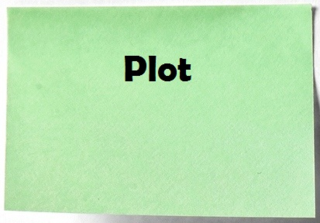 mantra of “show don’t tell,” sometimes when telling a story, you’ll need to use exposition. A good example of this is when one character must catch up another on what has occurred. Though the reader already knows what happened, the story won’t make sense if that information or action isn’t repeated to another character. Of course, the more words and sentences that are needed to the uninformed character caught up, the more the story is slowed.
mantra of “show don’t tell,” sometimes when telling a story, you’ll need to use exposition. A good example of this is when one character must catch up another on what has occurred. Though the reader already knows what happened, the story won’t make sense if that information or action isn’t repeated to another character. Of course, the more words and sentences that are needed to the uninformed character caught up, the more the story is slowed.
When confronted with such a dilemma, use the literary convention of the fast forward, a term coined by CSFW’s David Smith. A fast forward involves “shortcutting” to relay the information the character needs to know.
A couple of examples include:
“They found Valders’ body down at the wharf,” Ace said to his partner. “It was all hacked up.”
or
Ace filled in his partner about Valders’ murder.
This technique commonly is used in mysteries but can be found in every genre.
When using a fast forward, relay the information as succinctly and as quickly as possible. The more details you provide, the longer the story takes to get back to the action. You must always remain aware, however, that the character who is provided the information can know only as much as what he was told.
In addition, try to give the fast forward more purpose than just getting a character caught up. A fast forward, after all, marks a good opportunity to subtly relay information about the characters’ personalities. For example, in the following passage we learn that Ace doesn’t want to appear vulnerable and that his partner is a bit indifferent:
Ace tried to not let his voice tremble. “They found Valders’ body down at the wharf. It was all hacked up.” His partner grunted.
Adding the reaction of the character who is caught up also helps hide the fast forward by quickly shifting the story from exposition to action.
Need an editor? Having your book, business document or academic paper proofread or edited before submitting it can prove invaluable. In an economic climate where you face heavy competition, your writing needs a second eye to give you the edge. Whether you come from a big city like Detroit, Michigan, or a small town like Carefree, Arizona, I can provide that second eye.
Amazon.com Widgets
July 27, 2014
Five Great Quotations about Readers
“The reader 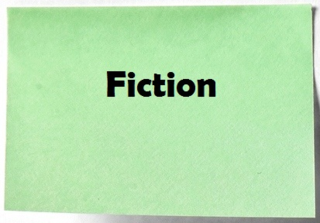 has certain rights. He bought your story. Think of this as an implicit contract. He's entitled to be entertained, instructed, amused; maybe all three. If he quits in the middle, or puts the book down feeling his time has been wasted, you're in violation.” - Larry Niven
has certain rights. He bought your story. Think of this as an implicit contract. He's entitled to be entertained, instructed, amused; maybe all three. If he quits in the middle, or puts the book down feeling his time has been wasted, you're in violation.” - Larry Niven
“No one can write decently who is distrustful of the reader's intelligence or whose attitude is patronizing.” - E. B. White
“The unread story is not a story; it is little black marks on wood pulp. The reader, reading it, makes it live: a live thing, a story.” - Ursula K. Le Guin
“Everything that is written merely to please the author is worthless.” - Blaise Pascal
“People do not deserve to have good writing, they are so pleased with bad.” - Ralph Waldo Emerson
Need an editor? Having your book, business document or academic paper proofread or edited before submitting it can prove invaluable. In an economic climate where you face heavy competition, your writing needs a second eye to give you the edge. Whether you're from a big city like Seattle or a small town like Sheyenne, North Dakota, I can provide that second eye.
<A HREF="http://ws-na.amazon-adsystem.com/widg... Widgets</A>Related articles
 Five Great Quotations about Editing
Five Great Quotations about Editing Five Great Quotations about Business of Writing
Five Great Quotations about Business of Writing Five great quotations about fiction
Five great quotations about fiction Five great quotations about book critics
Five great quotations about book critics
July 26, 2014
Benefits, pitfalls of flat characters
When a 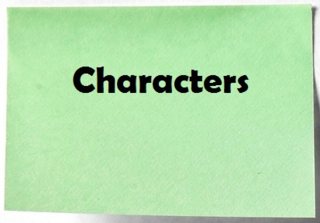 character doesn’t change and is fairly uncomplicated, it is said to be a flat character. Its opposite is a round character, which has dimension and develops over the course of the story.
character doesn’t change and is fairly uncomplicated, it is said to be a flat character. Its opposite is a round character, which has dimension and develops over the course of the story.
Typically only one or a small number of round characters appear in a story, and they usually are the protagonist or main characters. Virtually all of the other characters will be flat by necessity. That’s because their main purpose is to move the story along. After all, you may need a cop directing traffic on a street that our main character desperately must get down; the cop need not be developed or have any other traits than those typical of one directing traffic – a firm stance, blowing a whistle, maybe fluid motions with his arms and hands.
Despite being so simple, there are a couple of variations on flat characters.
A cardboard character is unreal due to its superficiality. A good example would be the cut-out Mary Sue cliché of fan fiction in which the character is an everyday, lonely woman who has a good heart. Another is red shirt of “Star Trek: The Original Series” in which the character wearing that colored uniform usually is the one who dies in a scene. Typically readers find such characters annoying.
A background or stock character is one whose traits are merely provided to that the reader know what his or her job is. Such a character – like the aforementioned policeman directing traffic – merely appears in a story to move along the action. Novelist Henry James called them ficelle characters while Vladimir Nabokov called them peri characters.
A static character remains the same throughout the story, meaning it does not grow or develop; typically they appear several times in a story rather than just once as the previously mentioned policeman directing traffic. Its opposite is a dynamic character, which also is a round character. An example of static characters are Rosencranz and Guildenstern from “Hamlet.”
Need an editor? Having your book, business document or academic paper proofread or edited before submitting it can prove invaluable. In an economic climate where you face heavy competition, your writing needs a second eye to give you the edge. Whether you come from a big city like Austin, Texas, or a small town like Bald Knob, Arkansas, I can provide that second eye.
<A HREF="http://ws-na.amazon-adsystem.com/widg... Widgets</A>
Related articles
 Constructing your story's main character
Constructing your story's main character Conflict: The heart of every story
Conflict: The heart of every story
July 25, 2014
Promote books to young adults using social media
If promoting your books to today’s teens and young college students, you may want to reconsider what social media you’re using.
Surveys indicate that fewer than 5 percent of teens use Google+, Tumblr or Pinterest. Numbers further show that they’re leaving behind Facebook and their use of Twitter hasn't risen for several years.
Yet teens and especially college students in their twenties do read and buy books, especially those in the science fiction, fantasy, horror and (obviously) young adult genres. By not using the social media they turn to, you’re missing an opportunity to sell books to a large segment of your potential readers – readers who will be around for several decades to come to buy more of your titles.
So what social media are teens and twentysomethings using in 2014?
Snapchat
This service allows users to send photos or a video that lasts up to 10 seconds. Snapchat boasts more than a 100 million users, and more than a quarter of all 18-29 year olds with cell phones use it.
Instagram
Users can share pictures and videos via this service. Its use among teens is at 4.8 million and expected to grow during the next two years by about 1.7 million.
Vine
Owned by Twitter, Vine allows users to share videos that last up to six seconds. It claims more than 40 million users, many of whom are youth.
Pheed
This mobile app for sharing photos, videos and voice tracks also allows users to make live broadcasts. Though it has a mere 3 million users, about 84 percent of them are ages 18-25.
Of course, Facebook does remain among the top two most used social media sites for teens and young adults, so don’t eliminate it from your promotional efforts. Instead, began incorporating into your book marketing other sites that youth increasingly prefer.
Need an editor? Having your book, business document or academic paper proofread or edited before submitting it can prove invaluable. In an economic climate where you face heavy competition, your writing needs a second eye to give you the edge. Whether you come from a big city like Los Angeles, California, or a small town like Hell, Michigan, I can provide that second eye.
<A HREF="http://ws-na.amazon-adsystem.com/widg... Widgets</A>
Related articles
 Use YouTube to promote your book
Use YouTube to promote your book How long and frequent should author's blog be?
How long and frequent should author's blog be?
July 24, 2014
Two ebook formats dominate industry
When self-publishing  an ebook, you’ll likely run into a couple of terms about the “format” that your manuscript must appear in, specifically terms like EPUB and MOBI. While you need not be too concerned about how to create documents in each format, knowing the difference between the two can help you better understand the ebook creation process.
an ebook, you’ll likely run into a couple of terms about the “format” that your manuscript must appear in, specifically terms like EPUB and MOBI. While you need not be too concerned about how to create documents in each format, knowing the difference between the two can help you better understand the ebook creation process.
Each electronic device that you can use to access ebooks – a tablet, a Kindle, a Nook, a smartphone – uses an operating system. Because these devices are created by competing companies, they use different operating systems, each with their own benefits and drawbacks. Operating systems only can read information provided to it in certain formats.
Though there are many different formats that ebooks can appear in, generally, two major industry standards dominate.
One is called EPUB. This format is used by most major ebook retailers who produce ebooks, including Nook (Barnes and Noble), iPad (Apple), Kobo, and Sony Reader. The other is MOBI, which is used by Kindle (Amazon.com).
When self-publishing, you do need not know how to write software code in EPUB or MOBI. Currently, Kindle DP, Smashwords, and most other publishers of ebooks will reformat Microsoft Word documents into EPUB and MOBI formats for you when uploaded. However, to accomplish that, you may need to follow specific guidelines about how you create and format your Word document; for example, Smashwords does not allow tabs to be used (while Kindle DP has no problem with it).
Need an editor? Having your book, business document or academic paper proofread or edited before submitting it can prove invaluable. In an economic climate where you face heavy competition, your writing needs a second eye to give you the edge. Whether you come from a big city like Miami, Florida, or a small town like Normal, Illinois, I can provide that second eye.
<A HREF="http://ws-na.amazon-adsystem.com/widg... Widgets</A>
Related articles
 Q&A with Inventing Reality Editor Rob Bignell
Q&A with Inventing Reality Editor Rob Bignell Getting started with formatting your ebook
Getting started with formatting your ebook Distribute ebook on variety of ereaders, tablets
Distribute ebook on variety of ereaders, tablets
July 23, 2014
How to properly use a semicolon (wink, wink)
Among the 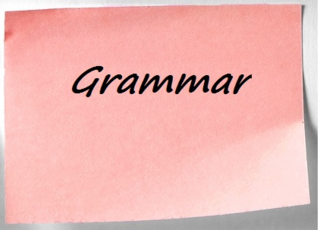 most misunderstood of punctuation marks is semicolons. That the mark serves as a stand-in for a wink when texting probably is appropriate!
most misunderstood of punctuation marks is semicolons. That the mark serves as a stand-in for a wink when texting probably is appropriate!
For the record, there are two instances when the semicolon should be used.
One case in when a closely-related second sentence, to make any sense, needs to be connected to the one prior to it. If the second sentence is just a phrase, however, connect it with a comma.
RIGHT: The ship shuddered as the alien’s antimatter salvo struck it; many of the crew wondered if they’d survive the expedition.
RIGHT: The ship shuddered as the alien’s antimatter salvo struck it, causing many of the crew to wonder if they’d survive the expedition.
WRONG: The ship shuddered as the alien’s antimatter salvo struck it; causing many of the crew to wonder if they’d survive the expedition.
A second case is to separate phrases in a series that is set off with a colon (when the eyes in your text aren’t winking, you’re using a colon!).
RIGHT: Among Yellowstone National Park’s highlights are: multiple geysers that regularly erupt; large wildlife such as bison, bears, elk herds, and wolves; and dozens of high waterfalls.
WRONG: Among Yellowstone National Park’s highlights are geysers; large wildlife; and high waterfalls.
Need an editor? Having your book, business document or academic paper proofread or edited before submitting it can prove invaluable. In an economic climate where you face heavy competition, your writing needs a second eye to give you the edge. Whether you come from a big city like Los Angeles, California, or a small town like Hell, Michigan, I can provide that second eye.
<A HREF="http://ws-na.amazon-adsystem.com/widg... Widgets</A>
Related articles
 Mastering the fine art of dialogue punctuation
Mastering the fine art of dialogue punctuation Make final words of your story count
Make final words of your story count Improve writing's texture by avoiding repetition
Improve writing's texture by avoiding repetition
July 22, 2014
Don’t leave reader in fog with vague descriptions
As a 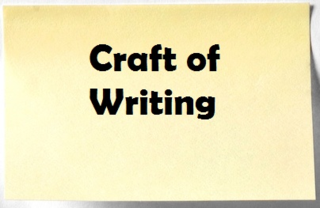 storyteller, you want to draw readers into your tale so that they vicariously live out the action. One way to achieve that it by providing evocative descriptions of the setting or action. Not providing that likely will leave readers in a fog, in which they cannot clearly visualize where the story occurs or what is happening.
storyteller, you want to draw readers into your tale so that they vicariously live out the action. One way to achieve that it by providing evocative descriptions of the setting or action. Not providing that likely will leave readers in a fog, in which they cannot clearly visualize where the story occurs or what is happening.
An example of fog (a term coined by CSFW’s David Smith) might be:
Peter entered the dark farmhouse.
The passage leaves readers asking many questions. Just how dark is the farmhouse? Why is the farmhouse dark? What is the significance of the farmhouse being dark? How did he enter the farmhouse? A reader may not ask these questions aloud, but they linger in her unconsciousness. Passages like the one above simply are too generalized for readers to really imagine the setting. Too many such passages disconnect readers from the story.
One solution is to appeal to the readers’ five senses by offering descriptions of the farmhouse. When sounds, scents, and tactile details are included, readers can more easily immerse themselves into the scene. In addition, though dark does appeal to the sense of sight, it is too nebulous of a word to give a clear picture of the scene, so using more precise wording also can resolve the problem.
For example, the above passage could be rewritten as:
As the farmhouse’s screen door creaked open, the morning's luster gave way to a stained brown like that of withered mustard seed.
Need an editor? Having your book, business document or academic paper proofread or edited before submitting it can prove invaluable. In an economic climate where you face heavy competition, your writing needs a second eye to give you the edge. Whether you come from a big city like San Antonio, Texas, or a small town like Toad Suck, Arkansas, I can provide that second eye.
<A HREF="http://ws-na.amazon-adsystem.com/widg... Widgets</A>
Related articles
 Maintain tone by avoiding subjective tension
Maintain tone by avoiding subjective tension Work off the fat from overwritten descriptions
Work off the fat from overwritten descriptions Coax readers to eat your story's veggies
Coax readers to eat your story's veggies Shun beautiful writing done for beauty's sake
Shun beautiful writing done for beauty's sake Ensure descriptive details aren't just chrome
Ensure descriptive details aren't just chrome
July 21, 2014
Don’t end novel with cliffhanger
One of 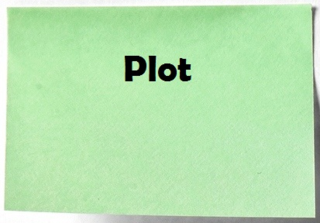 the new writing trends among self-published authors is to end their novel on a cliffhanger. The idea is that this will generate interest in purchasing the author’s next novel, which is a sequel.
the new writing trends among self-published authors is to end their novel on a cliffhanger. The idea is that this will generate interest in purchasing the author’s next novel, which is a sequel.
Unless readers know they've picked up a trilogy or a book in a story arc, most will find a cliffhanger ending unsatisfying and wonder why the author didn't finish the story. As most television show episodes, motion pictures, novels and short stories have a clear beginning-middle-end, readers have become accustomed to tales that follow such a plot line.
If you wish to open the way for a sequel, consider structuring your novel so it completes one story that is part of a larger tale. For example, a trilogy might be about an unlikely band of characters going on a quest. To complete the first part of the journey, they must overcome some major obstacle that cements them together as a team. This leaves an opening for them to pick up their quest in progress in the next novel, which has them overcome a specific goal necessary for them to continue their journey (Perhaps to reach a specific spot they must solve some large puzzle). The third novel would follow this pattern by following another specific adventure in the quest. Indeed, most of the original King Arthur stories about the quest for the Holy Grail were written using this structure – as self-contained stories that each bring the characters a little closer to achieving their overall goal.
One possibility for including the cliffhanger in a novel is to add as an epilogue. Once the segment of the heroes’ adventure has been completed in the novel’s chapters, the epilogue is an extra that doesn’t feel tacked on but opens the ways for a sequel.
To get a novel with a cliffhanger to not end that way, you’ll likely need to add the solution to the cliffhanger in one last chapter. That may require editing some sections out of the story to prevent it from being too long. In a worst-case scenario, you may need to revisit the story’s plot and revise it so it contains a self-contained story.
Need an editor? Having your book, business document or academic paper proofread or edited before submitting it can prove invaluable. In an economic climate where you face heavy competition, your writing needs a second eye to give you the edge. Whether you come from a big city like San Francisco, California, or a small town like Nimrod, Oregon, I can provide that second eye.
<A HREF="http://ws-na.amazon-adsystem.com/widg... Widgets</A>
Related articles
 When should you start a new novel chapter?
When should you start a new novel chapter? Basic guidelines for devising cliffhangers
Basic guidelines for devising cliffhangers Editing client releases quest novel sequel
Editing client releases quest novel sequel
July 20, 2014
Five Great Quotations about Originality in Writing
“There is 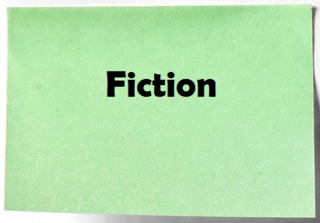 no idea so brilliant or original that a sufficiently-untalented writer can't screw it up.” - Raymond Feist (for the corollary, see Lawrence Watt-Evans below)
no idea so brilliant or original that a sufficiently-untalented writer can't screw it up.” - Raymond Feist (for the corollary, see Lawrence Watt-Evans below)
“There is no idea so stupid or hackneyed that a sufficiently-talented writer can't get a good story out of it.” - Lawrence Watt-Evans
“In brief, I spend half my time trying to learn the secrets of other writers - to apply them to the expression of my own thoughts.” - Shirley Ann Grau
“A writer will seal his own coffin,
And the interests of readers will soften,
If the author insists
On the usual twists,
And he goes to the Wells once too often.” - Mark Grenier
“Observe, don't imitate.” - John M. Ford
“The writer's genetic inheritance and her or his experiences shape the writer into a unique individual, and it is this uniqueness that is the writer's only stuff for sale.” - James Gunn
Need an editor? Having your book, business document or academic paper proofread or edited before submitting it can prove invaluable. In an economic climate where you face heavy competition, your writing needs a second eye to give you the edge. Whether you live in a big city like Austin, Texas, or a small town like Waldo, Ohio, I can provide that second eye.
<A HREF="http://ws-na.amazon-adsystem.com/widg... Widgets</A>Related articles
 Five Great Quotations about the Power of Writing
Five Great Quotations about the Power of Writing Five great quotations about writer's block
Five great quotations about writer's block Five great quotations for aspiring writers
Five great quotations for aspiring writers Five Great Quotations about Editing
Five Great Quotations about Editing Five Great Quotations for Aspiring Writers
Five Great Quotations for Aspiring Writers
July 19, 2014
How to come up with characters' names
One of the most important decisions you’ll make as a storyteller is the names if your characters. If the names don’t ring right with readers, it can wear on them despite that the rest of your story is exceptional. Consider that the primary male character in a romance novel typically has a very strong, masculine name, so Lucas and Griffin work as Alpha male names but Sheldon doesn’t. In science fiction’s “Star Trek,” several names were considered for the commander of the starship, the series’ lead, before “James T. Kirk” emerged as the best one.
So how do you come up with a character’s name? It’s a matter of searching for and playing with names until you land on the right-sounding one.
Here are some different techniques that clients I’ve worked with have used for coming up with character names:
g Anagram maker (works well for fantasy book)
g Ancient names (modernize them)
g Atlas (look up names of exotic foreign cities and towns, then alter the vowels and consonants; for example Nepal could become Palen or Palne)
g Baby name website/book
g Census records (works well for historical fiction)
g Dead languages (find a word in that language that describes your character; works well in science fiction or fantasy books)
g Google translate (put in a word that describes your character and then find the equivalent of it in a foreign language)
g History books (works well for historical fiction)
g Hymnals
g Obituaries
g Phone books
g Puns (works well for humor stories)
g Symbolic association (a good example is Luke Skywalker; this is like leaving a cookie for the reader)
If you write a lot and plan to publish a number of stories and novels, be sure to keep a name list. Each time you stumble across a great potential name, add it to the list. And while names aren’t interchangeable between characters, the discarded names from the today’s story might by the perfect name for tomorrow’s tale.
Need an editor? Having your book, business document or academic paper proofread or edited before submitting it can prove invaluable. In an economic climate where you face heavy competition, your writing needs a second eye to give you the edge. Whether you come from a big city like Philadelphia, Pennsylvania, or a small town like Boring, Oregon, I can provide that second eye.
<A HREF="http://ws-na.amazon-adsystem.com/widg... Widgets</A>
Related articles
 Base story on overcoming emotional disturbance
Base story on overcoming emotional disturbance What is a story? An autopsy of a tale
What is a story? An autopsy of a tale Select a viewpoint that gives you flexibility
Select a viewpoint that gives you flexibility Create meaningful settings in your story
Create meaningful settings in your story



